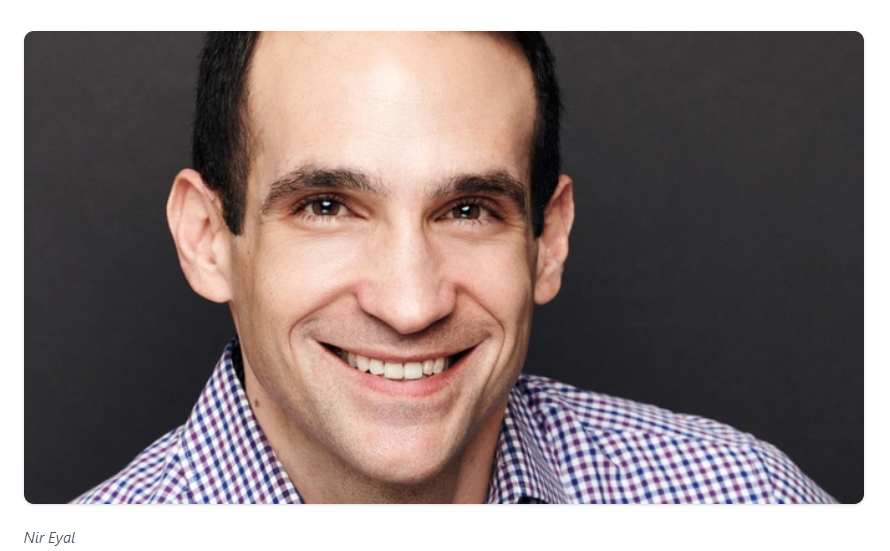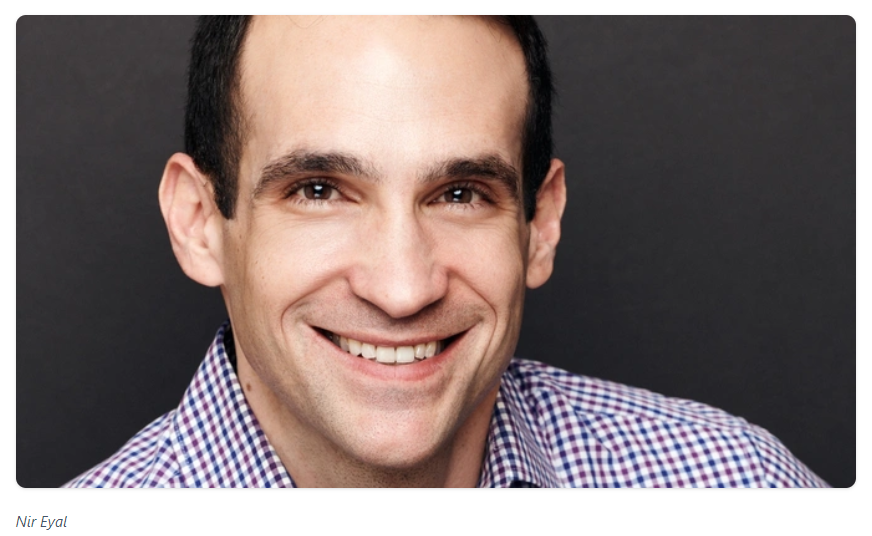In this week’s episode Wall Street Journal bestselling author Nir Eyal is here to help you become indisctractible.
What you pay attention to is what grows. So if you want to grow your business, being able to focus on your work and ignore distractions is crucial to your success. It can also make you happier.

Not just because you’re making more money, but because you’re more present in the current moment. A Harvard study revealed people spend about 47 percent of their waking hours thinking about something other than what they’re doing, and this mind-wandering typically makes them unhappy.
Want to make more money and be happier? Wall Street Journal bestselling author Nir Eyal is here to help you become indisctractible. Nir has the unique ability to bring together expertise in psychology, technology and business. He is passionate about exploring how we can define what good work looks like without distractions so you are able set yourself up for success both personally as well professionally
I recently interviewed him for my podcast, Launch Your Business, and will share some of the key takeaways below.
As a special bonus for listeners, Nir would like to give away a few copies of his book Indistractable: How to Control Your Attention and Choose Your Life. Just share one of your key takeaways from this episode on Instagram and tag me and Nir. We’ll select a few winners and send out some free books!
And yes, it’s fine if you happen to share some of the key takeaways referenced below. Great minds think alike!
Debunking the myth of distraction
Stop me if you’ve heard this one before “Want to be more successful? Stop binge watching Netflix!” That’s just lazy advice and, depending on what you’re watching, Netflix could actually be considered market research.
To become indistractable, Nir states we have to get clear on the opposite of distraction. Most people would say the opposite of distraction is focus, but the opposite is actually traction. I’ll let Nir provide more details on why this distinction is so important.
“Traction by definition is any action that pulls you towards what you said you were going to do. Things that you do with intent, things that move you closer to your values and help you become the kind of person you want to become. The opposite of traction, distraction is any action that pulls you away from what you plan to do further away from your goals, further away from becoming the kind of person you want to become. So this is super important because any action can be traction or distraction based on one word. And that one word is intent.”
Therefore, if you intend to binge watch Netflix because you’ve blocked that time off to relax, enjoy! It only becomes a problem – or a distraction – when it pulls you away from what you intended to do at that time.
Nir goes on to warn us that the most dangerous distractions are the ones that trick you into focusing on the urgent, quick tasks as opposed to the deeper work that you really need to do to accomplish your goals.
This is why it’s beneficial to have a virtual assistant who can handle these tasks while you focus on deep, high-impact work.
Identifying the cause of distraction
There are three common distractions that we can all easily control.
Pings, dings and rings.
As you probably know by now, turning off your notifications can help you improve your focus, but it still won’t make you indistractable. In fact, external triggers only account for 10% of our distractions. So, quick math will tell you the bulk of triggers are caused internally. And, I should note, about 3% of people have ADHD and it’s important to acknowledge that.
For everyone else, Nir is about to go in on why some people have trouble managing these internal triggers.
“They just don’t have the ability to deal with discomfort in a way that leads them towards traction rather than distraction. What we find is that high performers, they use these internal triggers, the uncomfortable states to drive them towards traction like rocket fuel. They use boredom, insecurity, fear, stress, anxiety, they use it like rocket fuel. Whereas low performers, when they feel discomfort, boredom, anxiety, stress; they escape it. They escape it with email. They escape it with checking the news for the hundredth time, they escape it with a drink. They escape with distraction. Distraction is a desire to escape discomfort, which is why we have to admit that time management is pain management”
The truth hurts, and that one hit rather hard, but he wasn’t finished. Nir goes on to emphasize the need to start with your internal triggers and discomfort and master them, or they’ll end up mastering you.
Four steps to becoming indistractable
So we now have a better understanding of what distraction is, realized the majority of it is all our fault, now what? Nir shared a high level overview of the four strategies for becoming indistractable.
1. Master the internal triggers
Like Nir said, time management is pain management. Sure, it can be uncomfortable to push through challenging tasks but that’s where growth occurs on both a personal and professional level.
2. Make time for traction
As you’ll hear in the episode, Nir strongly feels that to-do lists aren’t nearly as effective as they could be. You have to put these action items on your calendar. He states “If you don’t know what traction is, you don’t know what distraction is. If you don’t have it scheduled in your day, what did you get distracted from?” Blocking off time for your to do list is the key to actually getting that work done and identifying distractions as they arise.
3. Hack back the external triggers
We already discussed the pings, dings and rings; but that’s just the basics. Nir goes on to state we need to dig deeper “What about all these stupid meetings that we have to go to that are nothing more than a distraction? What do you do about that? What do you do about your kids? Many of us have to work from home. They can be a huge distraction, right?”
Yes. They. Can.
Fortunately, Nir goes on to state that we’re not powerless in solving for this and he shares more in his book.
4. Prevent distractions with pacts
The last step is to prevent distraction with pacts. A “precommitment”—removing a future choice—in order to overcome distraction. There are four different pacts to consider.
An effort pact is a kind of precommitment that involves increasing the amount of effort required to do something you don’t want to do. For example, removing distracting apps from your phone.
A price pact puts money on the line. If you stick to your intended behavior, you keep the cash. If you get distracted, you forfeit your funds. One of my business partners bet me $1,000 he would have part of our project done by the following day. The project never got completed but I still made $1,000.
An identity pact is another way to change your response to distractions. If you identify as a vegetarian you don’t have to expend much willpower to avoid eating meat. I’ll see how this works with identifying as a patient parent and follow up with you.
What’s next?
Those were a few key takeaways from my conversation with Nir. To hear the full conversation and get access to additional resources tune in to this week’s episode of the Launch Your Business podcast. Don’t forget to share your key takeaways for a chance to win Nir’s book!
This article was written by Terry Rice, and originally appeared on Entrepreneur.com.




